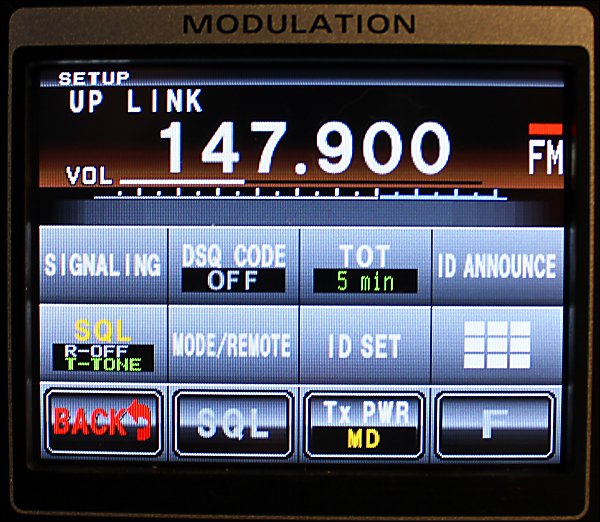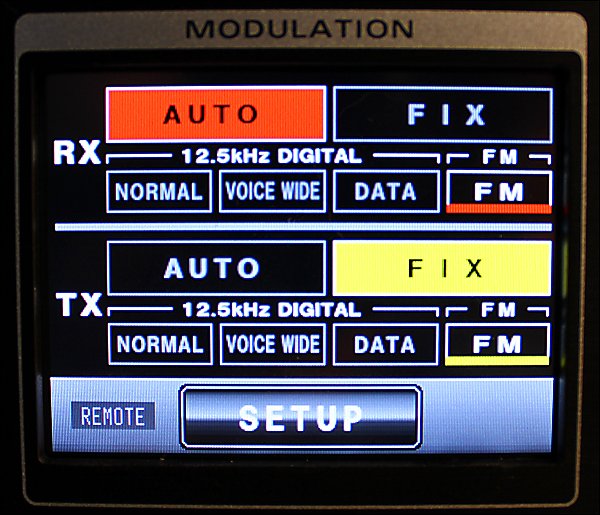

Using a Fusion Repeater
| I first read about the Yaesu Fusion system
in November 2013 while in the lounge at Adelaide airport on my Ipad. I
watched the video presentation and was intrigued at what was on offer. Having used D-Star and enjoyed what it had to offer, why was Yaesu producing a competing system that was not in any way compatible with D-Star...? Many months later I think the answer is that Yaesu had put together a better digital system. It integrated existing analogue FM, not as an after thought, but an integral part of the the Fusion system. Also the digital part offered narrow band digital and wide band digital. You would expect the wide band digital to sound better than what D-Star had to offer and it does. Even the narrow band digital, which is the same band width as D-Star sounds better. However I believe the real value of the Fusion system is the analogue FM. In VK6 many of our FM repeaters have been around for decades, and though still working need replacing, offering better performance. Having purchase at long last the Fusion repeater the DR-1X I'm impressed with its operation. The setup is simple yet offering many functions, all the FM requirements are there plus cross mode integration with the digital side. Front with touch sensitive screen
 Power - setup (reset) - Microphone socket
 Inside the repeater
The
photograph below shows whats inside the repeater. The model I have is
the 12 volt only one. The 110 to 240 volt model has a power supply
somewhere in the spare space.
 Frequency set up The
screen below is the one for setting the input and output frequency. You
touch the top part of the screen to change the repeater input
frequency. A key pad comes up and you type in the frequency. It can be
a 2 meter frequency or a 70cm frequency. To key in the output frequency
of the repeater you touch the bottom part of the screen and type in the
frequency, 2 metre or 70cm.
The touch buttons below that are for setting the squelch, power level (5 - 20 - 50 watts) and a function key which takes you to the function screen as below. The squelch is set in steps from open through to hard set. The white volume bar changes to yellow and this shows the squelch level. The back button takes you to the modulation screen. Frequency set up screen  Function
Screen
The screen below sets up most of the more detailed settings. Signaling is for setting up CTCSS encode and decode along with DSQ (digital coded squelch). TOT is time out timer from off to 10 minutes. ID Announce is for selection of voice ID or CW including CW speed and level. SQL is for selecting CTCSS frequencies and on or off. MODE/REMOTE is for repeater or base operation with separate controller. ID set is for setting up the callsign of the repeater. The button with the 9 squares brings up the key pad. Function
screen
 Modulation Mode
The screen below sets up the type of
modulation on the receive and transmit frequencies. The RX AUTO button
shown in red below is set so what ever mode comes in, digital narrow,
digital wide or FM it is received ready for re-transmission. In the
example below the TX mode is fixed to FM. Any mode that comes in goes
out as FM. All combinations are possible.
In
out modulation setting
 Remote Mode
The repeater operation can be controlled
remotely by connecting an external controller through the CONTROL I/O
connector at the back of the repeater.
Why would you want to do this as the repeater has many normal repeater functions built in. It is a stand alone repeater requiring no extras to work...? One example is VK6RAP, which is the input for the WIA news. Several functions are required that the Fusion repeater is not designed to do, for example remotely turn off the time out and CW ident. In general the following functions are available in remote operation. Changing the communication mode of the repeaters transmission & reception (FM-digital). Turning the RX and TX tone signal ON or OFF.. Monitoring the discriminator and analogue or demodulated digital audio. Remote Mode Detail
The remote mode is via the 15 pin mini
d-sub connector on the back of the repeater. A controller like the
NHRC-4 would be connected to this connector along with other circuitry
such as is required by the VK6 WIA news.
Perhaps the best way to understand the remote operation is to work through the 15 pin connector's pin functions. Some are an input to the repeater and some are an output from the repeater. Pin 1 Input to put the repeater in remote mode (GND this pin) Pin 2 Input to turn the repeaters TX on (GND this pin) Pin 3 Output which is the decoded output of the repeater's CTCSS/DCS decoder (GND decoded) Pin 4 Output which is the normal squelch output. (GND squelch open) Pin 5 Ground Pin 6 Input for CTCSS valid during external PTT control. Pin 7 Input audio to transmitter from external controller. Pin 8 Output of discriminator...Audio with no mute or any de-emphasis. (500mV P to P) Pin 9 Output of repeater's receiver audio with de-emphasis. (300m/V P to P) Pin 10 ground Pin 11 Input for the remote control of the mode settings (analogue - digital) Pin 12 Input for the remote control of the mode settings (analogue - digital) Pin 13 Input for RX tone off or on. Pin 14 Input for RX tone off or on. Pin 15 Power supply 12 volts. Test between analogue FM
& Yaesu Fusion digital.
This was a static test, in
that the signal level was from a home QTH to home QTH with a steady
signal level.
The radio used was the FM - Digital Fusion transceiver, not a separate FM receiver. It required 40dB of fixed attenuation in the receive coax, plus a 2m cavity filter, to produce a variable attenuation for the signal level to be noisy by different amounts. At the 20dB FM quietening (just hiss with a slight hint of crackle) the digital narrow and wide were perfect with no noise and clear no digital break up audio. At 10dB FM quietening (hiss plus considerable crackle) the FM was readability 5...Yes noisy but readable 5. The digital was breaking up, but on digital narrow it was possible to read the audio. On digital wide just sort of readable but not as good as the digital narrow, but not much in it. At 6dB FM quietening (hiss plus lots of crackle) the FM was readable but just. I could understand the audio. The digital was too broken to make sense of the audio. When the Fusion digital audio breaks up it is different to the break up of D-Star. D-star has lots of high frequency content making it hard on the ears. Fusion digital was different without the audio high frequency component of D-Star and easier on the ears. As the signals under test were steady, there is no question that FM would win in a mobile situation by a fair margin. This was my experience with D-Star, a week but readable fluttery signal on FM, was not possible to read switching to D-Star. Need a Fusion radio in the mobile to test just how it works in practice. Part of the test would be to see how quickly the digital can recover once it breaks up, as compared to D-Star. This recover phase does add considerably to the break up problem when mobile. Will do a video recording when I have the time. |